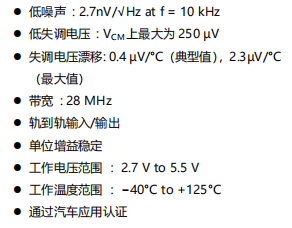用户在运用STM32时,能够使用其内部的PVD对VDD的电压进行监控,经过电源操控寄存器(PWR_CR)中的PLS[2:0]位来设定监控的电压值。
PLS[2:0]位用于挑选PVD监控电源的电压阀值:
000:2.2V
001:2.3V
010:2.4V
011:2.5V
100:2.6V
101:2.7V
110:2.8V
111:2.9V
在电源操控/状况寄存器(PWR_CSR)中的PVDO标志用来标明VDD是高于仍是低于PVD设定的电压阀值。该事情衔接到外部中止的第16线,假如该中止在外部中止寄存器中被使能的,该事情就会发生中止。当VDD下降到PVD阀值以下和(或)当VDD上升到PVD阀值之上时,依据外部中止第16 线的上升/下降边缘触发设置,就会发生PVD中止。这一特性可用于发现电压出现异常时,履行紧迫封闭使命。
下面是用于测验PVD的代码:
主程序的代码:
/* Includes ——————————————————————*/
#include “stm32f10x_lib.h”
/* Private typedef ———————————————————–*/
typedef enum {FAILED = 0, PASSED = !FAILED} TestStatus;
/* Private define ————————————————————*/
/* Private macro ————————————————————-*/
/* Private variables ———————————————————*/
ErrorStatus HSEStartUpStatus;
/* Private function prototypes ———————————————–*/
void RCC_Configuration(void);
void GPIO_Configuration(void);
void EXTI_Configuration(void);
void NVIC_Configuration(void);
/* Private functions ———————————————————*/
STM32 中文使用文档
/*****************************************************************************
* Function Name : main
* Description : Main program
* Input : None
* Output : None
* Return : None
******************************************************************************/
int main(void)
{
RCC_Configuration(); /* System Clocks Configuration */
GPIO_Configuration(); /* Configure the GPIO ports */
EXTI_Configuration();
PWR_PVDLevelConfig(PWR_PVDLevel_2V8);
PWR_PVDCmd(ENABLE);
while(1) {}
}
/*******************************************************************
* Function Name : RCC_Configuration
* Description : Configures the different system clocks.
* Input : None
* Output : None
* Return : None
********************************************************************/
void RCC_Configuration(void)
{
RCC_DeInit(); // RCC system reset(for debug purpose)
RCC_HSEConfig(RCC_HSE_ON); // Enable HSE
HSEStartUpStatus = RCC_WaitForHSEStartUp(); // Wait till HSE is ready
if(HSEStartUpStatus == SUCCESS) {
RCC_HCLKConfig(RCC_SYSCLK_Div1); // HCLK = SYSCLK
RCC_PCLK2Config(RCC_HCLK_Div1); // PCLK2 = HCLK
RCC_PCLK1Config(RCC_HCLK_Div1); // PCLK1 = HCLK/2
FLASH_SetLatency(FLASH_Latency_2); // Flash 2 wait state
FLASH_PrefetchBufferCmd(FLASH_PrefetchBuffer_Enable); // Enable Prefetch Buffer
RCC_PLLConfig(RCC_PLLSource_HSE_Div1, RCC_PLLMul_9); // PLLCLK = 8MHz * 9 = 72 MHz
RCC_PLLCmd(ENABLE); // Enable PLL
while(RCC_GetFlagStatus(RCC_FLAG_PLLRDY) == RESET) {} // Wait till PLL is ready
RCC_SYSCLKConfig(RCC_SYSCLKSource_PLLCLK); // Select PLL as system clock source
while(RCC_GetSYSCLKSource() != 0x08) {} // Wait till PLL is used as system clock source
}
RCC_APB2PeriphClockCmd(RCC_APB2Periph_GPIOB, ENABLE);
RCC_APB1PeriphClockCmd(RCC_APB1Periph_PWR, ENABLE);
}
STM32 中文使用文档
/****************************************************************
* Function Name : GPIO_Configuration
* Description : Configures the different GPIO ports.
* Input : None
* Output : None
* Return : None
****************************************************************/
void GPIO_Configuration(void)
{
GPIO_InitTypeDef GPIO_InitStructure;
GPIO_InitStructure.GPIO_Pin = GPIO_Pin_5|GPIO_Pin_6|GPIO_Pin_7|GPIO_Pin_8;
GPIO_InitStructure.GPIO_Speed = GPIO_Speed_50MHz;
GPIO_InitStructure.GPIO_Mode = GPIO_Mode_OUT_PP;
GPIO_Init(GPIOB, &GPIO_InitStructure); //GPIO B
}
/*******************************************************************
* Function Name : EXTI_Configuration
* Description : Configures .
* Input : None
* Output : None
* Return : None
********************************************************************/
void EXTI_Configuration(void)
{
EXTI_InitTypeDef EXTI_InitStructure;
EXTI_DeInit();
EXTI_StructInit(&EXTI_InitStructure);
EXTI_InitStructure.EXTI_Line = EXTI_Line16;
EXTI_InitStructure.EXTI_Mode = EXTI_Mode_Interrupt;
EXTI_InitStructure.EXTI_Trigger = EXTI_Trigger_Rising_Falling;
EXTI_InitStructure.EXTI_LineCmd = ENABLE;
EXTI_Init(&EXTI_InitStructure); // Configure EXTI Line16 to generate an interrupt
}
/***************************************************************************
* Function Name : NVIC_Configuration
* Description : Configures Vector Table base location.
* Input : None
* Output : None
* Return : None
**************************************************************************/
void NVIC_Configuration(void)
{
#ifdef VECT_TAB_RAM
/* Set the Vector Table base location at 0x20000000 */
#else /* VECT_TAB_FLASH */
/* Set the Vector Table base location at 0x08000000 */
#endif
STM32 中文使用文档
}
中止程序:
/**************************************************************************
* Function Name : PVD_IRQHandler
* Description : This function handles PVD interrupt request.
* Input : None
* Output : None
* Return : None
***************************************************************************/
void PVD_IRQHandler(void)
{
if (PWR_GetFlagStatus(PWR_FLAG_PVDO))
GPIO_WriteBit(GPIOB, 1 << 5, Bit_SET);
else
GPIO_WriteBit(GPIOB, 1 << 5, Bit_RESET);
}
注:在void EXTI_Configuration(void)中,关于EXTI_InitStructure.EXTI_Trigger = EXTI_Trigger_Rising_Falling; 中的初始化值,依据你的需求进行修正,详细细节如下:
EXTI_Trigger_Rising — 表明电压从高电压下降到低于设定的电压阀值发生中止;
EXTI_Trigger_Falling — 表明电压从低电压上升到高于设定的电压阀值发生中止;
EXTI_Trigger_Rising_Falling — 表明电压从高电压下降到低于设定的电压阀值、或从低电压上升到高于设定的电压阀值发生中止。









